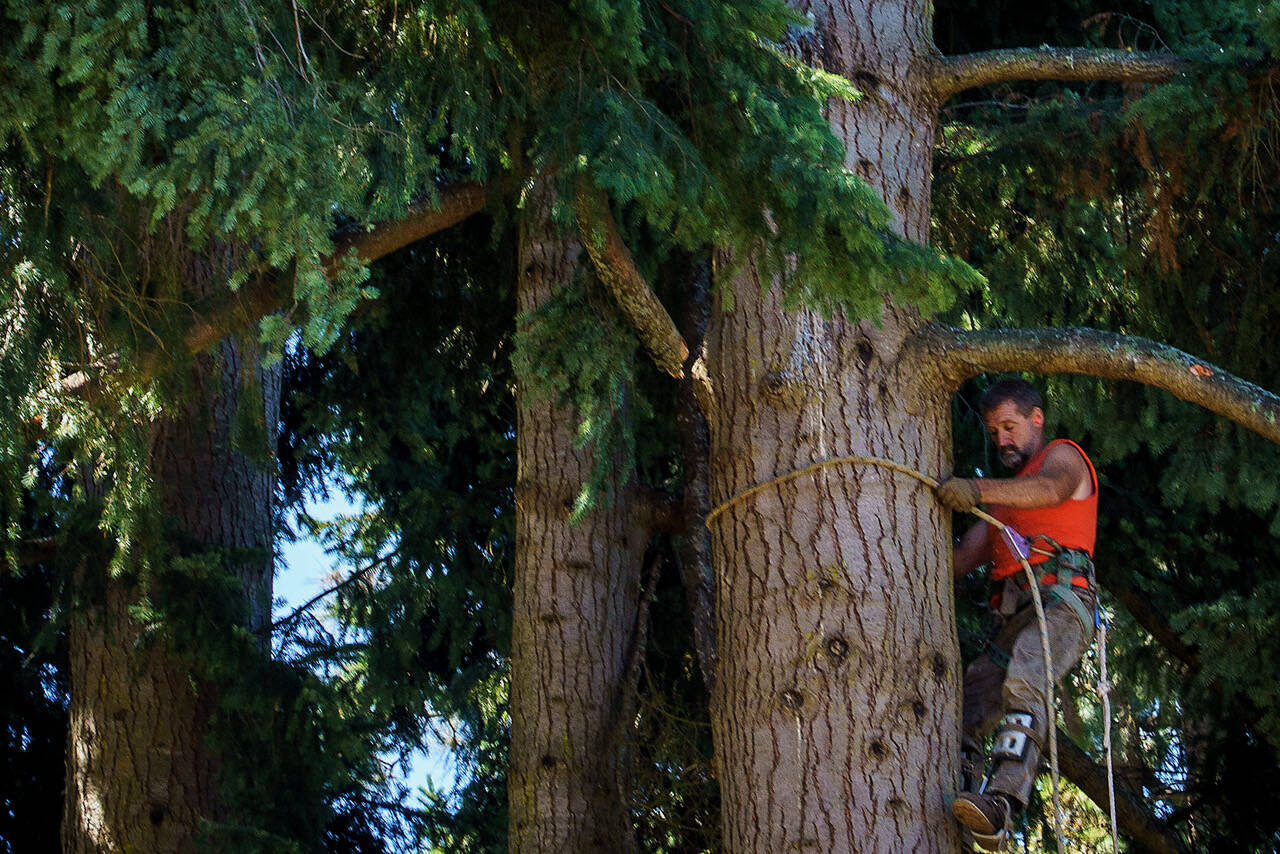In the wake of the recent removal of six massive trees deemed a safety hazard impeding a major infrastructure project, the Langley City Council is planning to discuss tree protection.
The topic will be on the agenda for a special meeting at 5 p.m. this Monday, July 28. The council will also talk about its budget priorities.
Last week, work crews cut down half a dozen Douglas firs along Edgecliff Drive on behalf of the city, an action that was appealed by the Whidbey Environmental Action Network, or WEAN, and Rhonda Salerno, a member of the city council. Salerno ended up submitting a “full” appeal, which will move forward to the city’s hearing examiner for a decision.
Prior to removing the trees, the city was granted a permit by the planning director, who agreed with the public works director that the trees posed a danger. In a statement this week, Mayor Kennedy Horstman defended the city and the contractor, saying they followed tree protection protocol for the Langley Infrastructure Project, the LIP.
“While I understand the removal was upsetting, I want to be clear: the city’s approach was careful, thorough and aligned with our policies,” Horstman said. “The protocols are not a promise that no trees will be lost — but they are a commitment to weigh every factor responsibly.”
As the mayor reminded, what was initially supposed to be an 18-month schedule for the LIP has now been compressed into just nine months to protect bald eagle habitat.
Arbor advocates argued that the “Edgecliff Six” provided stabilization of the nearby bluff, stormwater retention, carbon sequestration and wildlife habitat, among other things. They also believe more could have been done to preserve the trees and their roots.
At the city council meeting on Monday, nearly a dozen members of the public showed up to comment on the trees, many of them neighbors of the property where they were located.
“We know each other, not just by who we are but we know each other by the trees that are on our street,” Kim Pederson said. “There’s the poplars, there’s the cedars, there’s the old Doug fir and I have an iconic, huge old oak tree that people come and paint, and that’s not coming down.”
Another resident, David Smith, said he had changed his mind after looking at photographs, maps and other materials.
“I realized that those trees were never going to survive, ever,” he said. “You have 20-foot right-of-way, you have existing utilities, two cables, two generations of electrical, now we’re going to be putting into two sizeable trenches that need to be quite a distance apart. Had we known that earlier, we would not be in this confrontational moment. We could be working together.”
Councilmember Gail Fleming suggested adding a discussion of the protection of trees in east Langley to the next meeting. She expressed interest in involving the LIP contractor, the consultant and arborist in the discussion, but Horstman said she wasn’t comfortable paying what it would cost to have those professionals attend the meeting.



